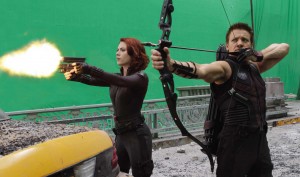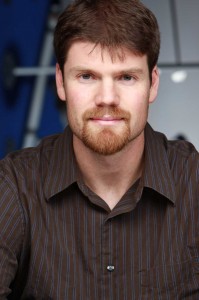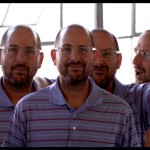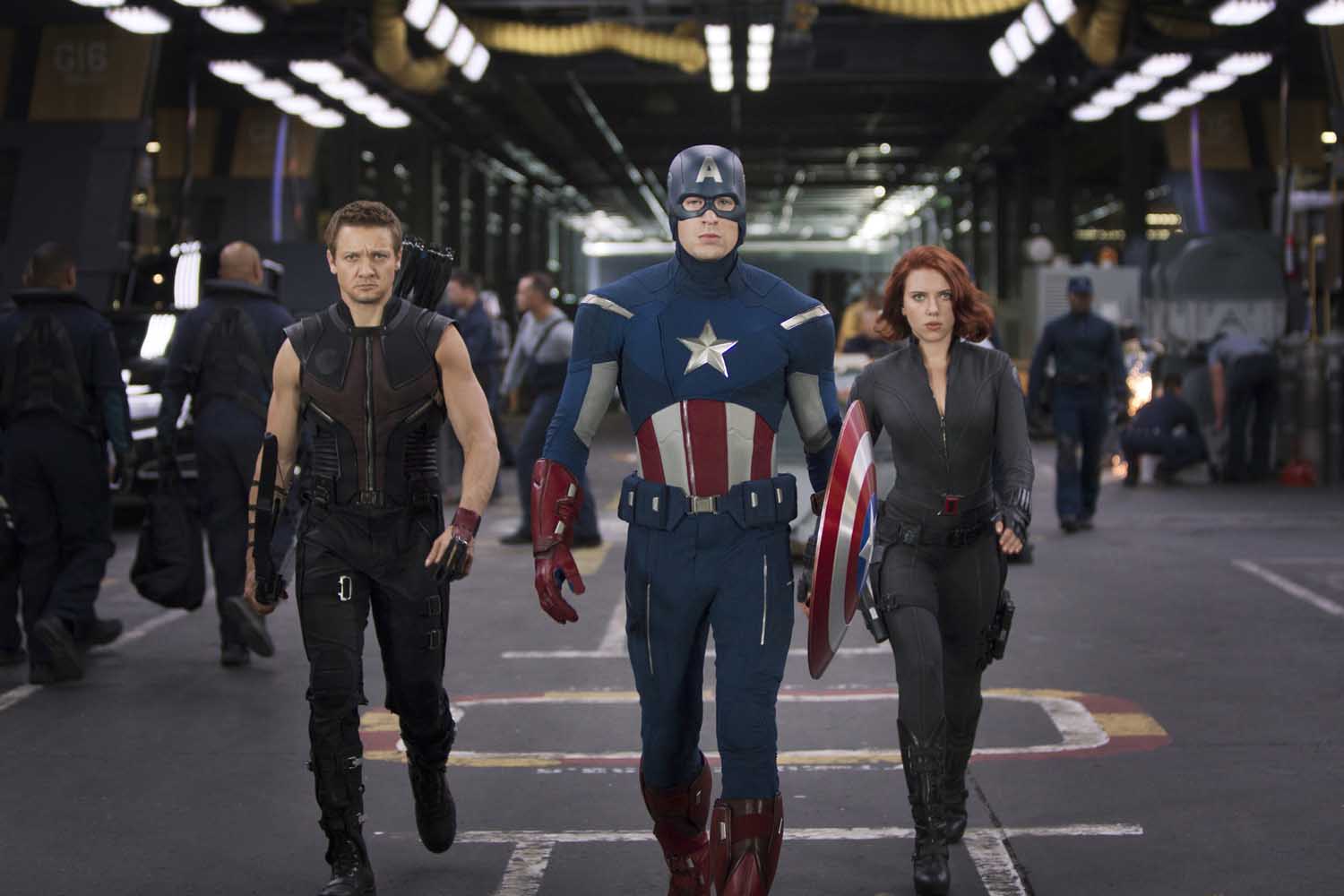
It also takes a village of visual effects houses to shepherd a film of this scale through to its anointed summer rendezvous with audiences. Industrial Light & Magic took the lead on the film’s visual effects, working with VFX supervisor Janek Sirrs and writer/director Joss Whedon.
Sirrs himself has worked both sides of the comic book branding aisle, having overseen FX work in Batman Begins, and then later in Iron Man 2. ILM did a lot of work on those first two “Shellhead” installments (as per the Marvel nicknaming lingo), and so the transition to Avengers – if you think of it as “Iron Man Plus” was almost natural.
Jeff White, who’d been working with a different kind of team – in this case, robots, in the Transformers films – came over to supervise ILM’s work on this superhero blockbuster.

And while there were some digital doubles deployed for three other Avengers – Black Widow, Hawkeye, and Captain America – those heroes were embodied mostly by actual actors (or actual stunt doubles) in costume. But, like Iron Man’s suits, there was one other Avenger that required a retinue of digits to be convincing – namely, Mark Ruffalo’s transformations from mild-ish Dr. Bruce Banner, into the green, angry Hulk.
Part of what makes this the most convincing Hulk of all – after two previous incarnations in Hulk-only films – is the continuity between Ruffalo the actor, and the finished green behemoth. “Ruffalo and Joss came back to ILM,” White says, and “did motion capture for each of his shots.”
Further, Whedon talked to ILM’s animators, saying “if we don’t get the Hulk right, no one’s going to buy this.” The director, White says, “coached the animators like actors.”

But they did share assets “at a technical level and secondarily we shared progression towards the final look determined by Sirrs, Whedon and Marvel. Sharing digital files has gotten easier to do over the years,” Rosen notes, citing “better standards in file formats then ever before and written tools internally to convert formats and directory structure to fit into our workflow.” Though he also adds that “if one house made progress that Joss liked, that look was then appropriated by the other houses to keep continuity and the ball moving forward.”
More specifically, Rosen says they “ingested models and textures for the Helicarrier, S.H.I.E.L.D.’s flying aircraft carrier, as well as a few digital doubles from ILM. Three of our sequences, adding up to about 130 shots, take place in the Wishbone Lab, which overlooks the Helicarrier atrium environment. ILM has been working with outside vendors quite a bit more recently so they are getting more standardized in packaging up assets for shared use. ILM uses proprietary software for a lot of their internal pipeline, so they have developed a process to export assets to the more standard Maya scene format and textures organized in directories based on their use for color, reflection, etc. We convert their structure to our own with scripts that we’ve developed. OpenEXR, ILM’s file format and standard, is a great way to share textures and other image files.”
Another advance that helped, according to White, was “postvis” – digitally filling in not-quite-finished shots during the editing, so the film could take shape in parallel to other postproduction work. One example was the use of some downtown Cleveland terrain to ultimately double for NY in the film’s finale. White mentioned a kind of “hi-res Google streetview” for the NY locales they wanted, where they could “slip in the photography,” to give an idea of what the finished rendering would look like.

In terms of software, White mentioned that most of the work was done on Maya and Nuke, though ILM’s proprietary Zeno pipeline was used for 3D modeling.
But the toolbox and software platforms are all in service of an aesthetic where “we’ve found Marvel really likes the audience to be immersed.” Such is the observation of Method Studios’ creative director, Steve Viola, who worked on the film’s title sequence – which comes after the film is over.
There, it serves as a kind of coda for all the action the audience has just seen. Whedon, he says, was “really drawn to the look of the battle scar imagery” – where the camera moves and pans over dinged-up suits and pieces of armor – “and pushed us get in closer and show what our heroes went through.”
Method’s previous Marvel experience ran to last year’s Captain America, and Viola says, comparing that film’s titles to The Avengers, that “you’ll also notice that both sequences have slightly dimensionalized type that lives in-scene with the rest of the imagery, rather than being comped over picture.”
It’s all part of that “immersiveness” he referred to, that thematic carry-over from previous Marvel films to this one.
But what does it portend for all the vendors down the line? Evil Eye’s Rosen takes the optimistic long-view on everyone’s behalf: “Maybe, on the next several Marvel shows we can repurpose assets from The Avengers.”





